#continuous integration testing
Explore tagged Tumblr posts
Text
Invimatic offers cutting-edge CRM web applications tailored to streamline business operations. Their platform prioritizes intuitive user interfaces and robust functionalities, empowering businesses to manage customer relationships seamlessly. With a focus on enhancing efficiency and productivity, Invimatic's CRM solutions optimize sales, marketing, and customer service processes. The platform's adaptability and scalability cater to diverse industry needs, providing a comprehensive suite of tools to elevate customer interactions and drive business growth.

0 notes
Text
can i say something controversial. the way people (especially american liberals but that's a whole nother can of worms) act about animal testing is sooooooooooo unhelpful. like is cosmetic testing on dogs/rodents/primates harmful and unnecessary? yes, in many cases! but does that mean all animal testing - for any application - should be categorically banned? no. animal testing is a vital process in many, many medical and research contexts and is conducted under a very strict set of standards, ergo applying "animal abuse" as a blanket label to all instances of animal testing is reductive at best and shows a flagrant lack of understanding of medical ethics on the part of the population. and don't even get me started on how slippery of a slope it is to go from condemnation of animal testing to just flat out eugenics
#speak friend and enter#and nobody better fucking come at me with 'what if we just tested on prisoners.' that is eugenics#like i think the thing that a lot of people just refuse to wrap their heads around is that these animals are bred for this.#it's not pleasant to think about but it's the reality of the situation and is a much more favorable outcome for both humans and animals#than many of the alternatives.#animal research is integral to our current understanding of biology and medicine and continues to be an important phase in research#anyway i saw a video about people doing urbex at an abandoned animal testing facility and got mad. it's a bit of a hot button for me!#there's also a point in there about public refusal to engage with the unsavory aspects of science and anti-intellectualism#but im too lazy to tease it out. but you get where im coming from
46 notes
·
View notes
Text
whatever i haven’t been properly and emotionally checked into an f1 season since 2021 anyway
#i miss the times when this sport wasn’t just a long continuous test of my patience#<- this is mostly aimed at the fia for literally singlehandedly ruining the integrity of the sport#it’s fun to be a hater but i’d find a season a hell of a lot more compelling if the people in charge weren’t cunts
2 notes
·
View notes
Text
Loving Travis
For most of my open-source software projects, I use the Actions platform built into GitHub for CI (continuous integration). GitHub Actions provides virtual machines to run workflows, so I don't have to administer build environments for Linux, MacOS, Windows, and so on. It's modern, convenient (if you use GitHub instead of, say, GitLab), fairly reliable, and (best of all) free (for public repos).
For me, the main limitation of Actions is that all their hosted runners use the x64 architecture. Sometimes I want to build and/or test on Arm CPUs---for instance my Libbulletjme project, which has a bunch of platform-sensitive C++ code.
For Libbulletjme, I still depend on the older TravisCI platform, run by a private firm in Berlin. In addition to a huge selection of build environments based on AMD CPUs, Travis also provides Arm-based Linux environments. (Officially, they're a "beta-stage" feature, but they've been in beta for years.) Like Actions, Travis is also free to open-source projects, though their notion of "open-source" seems a bit stricter than GitHub's.
I mention Travis because my experiments with the Vulkan API exposed a limitation in Libbulletjme, which led me to begin work on a new release of Libbulletjme, which led me to discover an issue with Travis's Arm-based build environments. A recent change to these environments caused all my Arm-based builds to fail. I could only go a bit further with Vulkan before I would have to make hard choices about how to work around the limitations of Libbulletjme v18.5.0 .
At 20:09 hours UTC yesterday (a Sunday), I e-mailed TravisCI customer support and explained my issue. At 12:25 hours UTC today, Travis announced a hotfix to solve my issue. That's pretty good turnaround, for a non-paying customer having issues with a "beta-stage" feature on a summer weekend.
Bottom line: I still love Travis. <3
#continuous integration#vulkan#computer architecture#software engineering#open source#github#hosting#upcoming releases#customer support#making progress#software testing#war stories#love#berlin
3 notes
·
View notes
Text
AI in DevSecOps: Revolutionizing Security Testing and Code Analysis

DevSecOps, short for Development, Security, and Operations, is an approach that integrates security practices within the DevOps workflow. You can think of it as an extra step necessary for integrating security. Before, software development focused on speed and efficiency, often delaying security to the final stages.
However, the rise in cyber threats has made it essential to integrate security into every phase of the software lifecycle. This evolution gave rise to DevSecOps, ensuring that security is not an afterthought but a shared responsibility across teams.
From DevOps to DevSecOps: The Main Goal
The shift from DevOps to DevSecOps emphasizes applying security into continuous integration and delivery (CI/CD) pipelines. The main goal of DevSecOps is to build secure applications by automating security checks. This approach helps in fostering a culture where developers, operations teams, and security experts collaborate seamlessly.
How is AI Reshaping the Security Testing & Code Analysis Industry?
Artificial intelligence and generative AI are transforming the landscape of security testing and code analysis by enhancing precision, speed, and scalability. Before AI took over, manual code reviews and testing were time-consuming and prone to errors. AI-driven solutions, however, automate these processes, enabling real-time vulnerability detection and smarter decision-making.
Let’s look at how AI does that in detail:
AI models analyze code repositories to identify known and unknown vulnerabilities with higher accuracy.
Machine learning algorithms predict potential attack vectors and their impact on applications.
AI tools simulate attacks to assess application resilience, saving time and effort compared to manual testing.
AI ensures code adheres to security and performance standards by analyzing patterns and dependencies.
As you can imagine, there have been several benefits of this:
Reducing False Positives: AI algorithms improve accuracy in identifying real threats.
Accelerating Scans: Traditional methods could take hours, but AI-powered tools perform security scans in minutes.
Self-Learning Capabilities: AI systems evolve based on new data, adapting to emerging threats.
Now that we know about the benefits AI has, let’s look at some challenges AI could pose in security testing & code analysis:
AI systems require large datasets for training, which can expose sensitive information if not properly secured. This could cause disastrous data leaks.
AI models trained on incomplete or biased data may lead to blind spots and errors.
While AI automates many processes, over-reliance can result in missed threats that require human intuition to detect.
Cybercriminals are leveraging AI to create advanced malware that can bypass traditional security measures, posing a new level of risk.
Now that we know the current scenario, let’s look at how AI in DevSecOps will look like in the future:
The Future of AI in DevSecOps
AI’s role in DevSecOps will expand with emerging trends as:
Advanced algorithms will proactively search for threats across networks, to prevent attacks.
Future systems will use AI to detect vulnerabilities and automatically patch them without human intervention.
AI will monitor user and system behavior to identify anomalies, enhancing the detection of unusual activities.
Integrated AI platforms will facilitate seamless communication between development, operations, and security teams for faster decision-making.
AI is revolutionizing DevSecOps by making security testing and code analysis smarter, faster, and more effective. While challenges like data leaks and algorithm bias exist, its potential is much more than the risks it poses.
To learn how our AI-driven solutions can elevate your DevSecOps practices, contact us at Nitor Infotech.
#continuous integration#software development#software testing#engineering devops#applications development#security testing#application security scanning#software services#nitorinfotech#blog#ascendion#gen ai
0 notes
Text
Future Of AI In Software Development
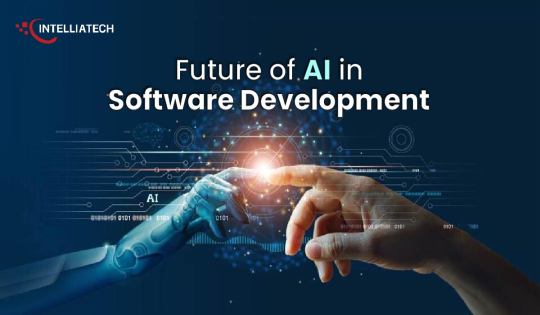
The usage of AI in Software Development has seen a boom in recent years and it will further continue to redefine the IT industry. In this blog post, we’ll be sharing the existing scenario of AI, its impacts and benefits for software engineers, future trends and challenge areas to help you give a bigger picture of the performance of artificial intelligence (AI). This trend has grown to the extent that it has become an important part of the software development process. With the rapid evolvements happening in the software industry, AI is surely going to dominate.
Read More
#Accountability#Accuracy Accuracy#Advanced Data Analysis#artificial intelligence#automated testing#Automation#bug detection#code generation#code reviews#continuous integration#continuous deployment#cost savings#debugging#efficiency#Enhanced personalization#Ethical considerations#future trends#gartner report#image generation#improved productivity#job displacement#machine learning#natural language processing#privacy privacy#safety#security concerns#software development#software engineers#time savings#transparency
0 notes
Text
#agile development#backend development#conclusion#continuous deployment#continuous integration#deployment#designing#DevOps#DevOps engineer#documentation#FAQs#frontend development#introduction#lean development#maintenance#product manager#Programming Languages#quality assurance engineer#requirement analysis#scrum master#software development#software development jobs#software development life cycle#software engineer#test-driven development#testing#types of software development#user documentation#what is software development
0 notes
Text
Continuous Integration (CI)/Continuous Deployment (CD) Software Testing Strategies
#Continuous Integration (CI)/Continuous Deployment (CD) Software Testing Strategies#Continuous Integration (CI)/Continuous Deployment (CD) Testing Strategies#Continuous Deployment (CD) Software Testing Strategies#Continuous Integration (CI) Software Testing Strategies#CD Software Testing Strategies#CI Software Testing Strategies#Continuous Integration Software Testing Strategies#Continuous Deployment Software Testing Strategies#Software Testing Services India#Software Testing Company India#Software Testing Services#Software Testing Company#QA Software Testing Services India#QA Software Testing Services#QA Software Testing Company India#QA Software Testing Company#QA Software Testing#Software Testing#Lucid Outsourcing Solutions#Lucid Outsourcing#Lucid Solutions
0 notes
Text

Aug ABSOLUTELY deserves the praise, @ryukikit. St. Augustine Alligator Farm is one of my favorite animal facilities, hands down. It's a pretty zoo, doable in an afternoon if you kinda like crocodilians, or an all day affair if you REALLY like crocodilians. Here are my favorite things about it and why I think it's worth supporting.
1. They keep animals in interesting social groups.

Crocodilians are heavily involved parents, but most places that breed them don't have the enclosure space to let the babies stay with the parents. St. Augustine does. One of my favorite groups was their crèche of slender-snouted crocodiles. They had the parents and then a yearling cohort and a new hatchling cohort. This aligns with how these guys live in the wild- the babies stick around longer! They have the space for it, and they are very in tune with the social needs of their animals.
Very, very few zoos can keep their baby crocs with the adults and still perform maintenance and animal health checks safely. This doesn't mean these facilities are bad- it just means that they have different management practices. And frankly, a lot of these species aren't frequently bred elsewhere. Your average zoo doesn't need a setup where you can have a multiyear crèche for slender-snouted crocodiles. Some species have better success when the young are pulled early, and some zoos are better set up to raise out any offspring separately or behind the scenes. Every facility's practices are different, and this just happens to work well at St. Augustine and be really enjoyable to see as a zoo patron.
Crocodilians are exceptional parents and very protective. It's a sign of incredible animal management practices and animals that feel very comfortable with staff that St. Augustine can do this with nearly every species they breed.
2. They understand the social needs of their animals.
Some crocodilians are social. Some are solitary. Some can live happily with a member of the opposite sex but get territorial around members of the same sex. St. Augustine pays incredible attention to their social groupings to ensure that they aren't just meeting the animals' physical health needs but their social needs as well. They do continuous scientific research about social structures in crocodilians, taking blood samples to test stress hormones and observing stress behaviors to see how group dynamics change.

For example, St. Augustine is home to one of the world's largest known living saltwater crocodiles, Maximo. And his comparatively tiny mate, Sydney. During the educational presentations with these two, they point out that even their monster of a croc needs his social group- he won't eat if she's not around and he is calmer during medical checks if he can see her. These animal share a deep and special pair bond, and they make sure to talk about how the social aspect of these animals' lives is integral to their care. It's a unique aspect of the way they talk about these animals, because he IS a spectacle and he IS a sensation, but they don't talk about him like he's a mindless killing machine- they talk about him like he's a big, complex predator with social needs like any other animal. Aug is the only facility I've been to where the emotional and social needs of crocodilians is part of the education they provide guests- and speaking of education...
3. Their demos and presentations are extremely good.
The presentations at St. Augustine are some of the best I've ever seen, and I've seen literally hundreds of animal talks on everything from aardvarks to zebras. But as you... can probably tell from my blog content, I've spent a lot of time learning about and working with reptiles. I really enjoyed all of their presentations because they are very scientific about things and avoid sensationalism. They really want you to be fascinated by these creatures and love them- but more than anything else, they want you to respect them.
Also, they do a really good job handling their ambassadors. I really enjoyed something as simple as watching an educator tell us about snakes. Throughout the whole presentation she made sure that most of the snake's body was looped in her hand. The snake was always supported and was very calm. She gave the snake plenty of head room so that it didn't feel constricted- it was just good handling all around.

But also, the presentations made it clear how much the park cares about the animals' well-being. When they do the feeding and training presentations, they make it very clear that the animals' participation is entirely voluntary. They do things differently for their 9-foot saltie and their 16-foot saltie, because the 16-footer is so large and heavy he actually struggles walking on land sometimes. They adapt their programs and his care to ensure that he's completely comfortable- and he didn't actually participate in the whole feeding when I was watching! At no point did they try to push him into anything uncomfortable; they offered, he didn't engage, and they moved on. It was a clear expression of his boundaries, and I really appreciated how much his caretakers respected that.
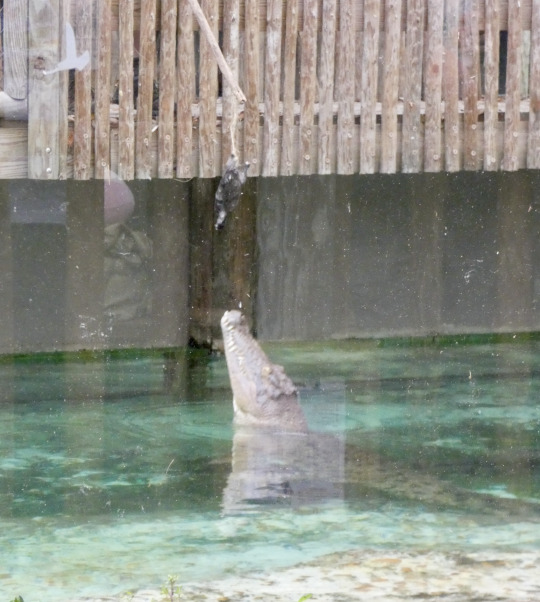
4. Ethical Interactions
I've been to... a lot of tourist locations in Florida that have animals you can hold. Almost always against my will! Many of them are pretty terrible, and you don't actually learn much, if anything. But I really found that to not be the case at St. Augustine. Every single animal presentation and interaction opportunity was accompanied by education about the animal's biology, habits, and- crucially- their conservation status.
When I held a baby alligator at St. Augustine, the proctors- there were two, one to ensure I was holding the gator correctly and the other to educate- were very informative about the role alligators play in their ecosystem and their conservation history. The animals were all properly banded, and one of the two proctors was there to ensure that none of the baby alligators were uncomfortable. As soon as they started getting squirmy or tense, they were removed, unbanded, and taken to an off-exhibit area to relax. And when the babies age out of petting size, they just go in the lagoon to live with others of their species. I saw one upset alligator the entire time I was there, and he was clearly upset that his escape attempt was foiled by a keeper during my nursery tour.
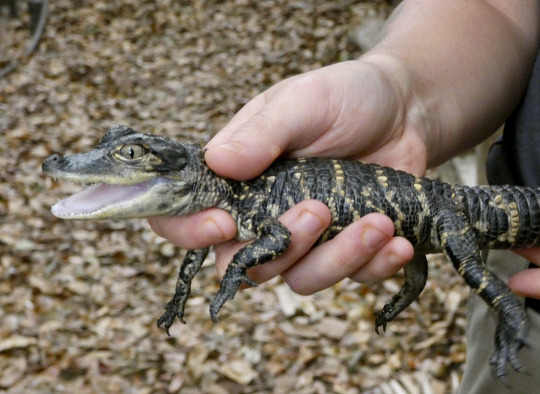
Even though he's restrained in this shot, you can see that his full body and tail are supported, and the grip, while firm, is gentle. He's distressed, but after I took this picture, she put him in his enclosure and he calmed down immediately.
Sometimes when you have petting attractions with baby animals, those animals... don't have a happy ending. (See: cub petting.) But St. Augustine's program is fine- the gators are all aged out of wanting to have mom around, there's no declawing/defanging, and they're handled with care. And it's worth it, because people love what they understand. St. Augustine was integral in raising public awareness about alligators back in the 60s when they were endangered, and now they're thriving- largely in part to programs like St. Augustine getting people to care.
And speaking of getting people to care, let's talk about their research.
5. Shared Research Results
St. Augustine is also home to more species of crocodilian than anywhere else in North America- all of them, usually. (They didn't have a Tomistoma when I visited- that may have changed.)
Because of this species diversity, it's an incredible research resource. Having every species means that you can do a lot of work comparing their behaviors, their growth patterns, and more. They've been a major research site for crocodilian biology since the 1970s. Today, they're one of the key sites for studying crocodilian play and social behaviors. They actually maintain a blog where they post copies of papers that were written using their animals, meaning that you can actually see the results of the research your admission helps fund. You can see that right here: https://www.alligatorfarm.com/conservation-research/research-blog/
All of this adds up to a zoo that provides a unique experience, tons of actual education, and transparency about what its research and conservation steps actually are. St. Augustine's come a long way since its opening in 1893, and they really do want you to leave with a new respect for the animals they care for. Ultimately, if you're a fan of reptiles, you can feel good about visiting the St. Augustine Alligator Farm- their care and keeping are top of the line, they do a ton of innovative conservation research and support for conservation organizations, and you can see this animal there:

(Gharial from the front. Nothing is wrong with her that's just what they look like from the front.)
6K notes
·
View notes
Text
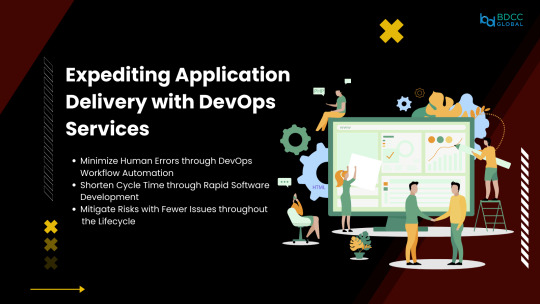
Accelerate your application delivery with DevOps services! 🚀💻
From continuous integration to automated testing, our expert developers are here to help you streamline your software development process and get your apps to market faster.
#applications#devops#continuous integration#automation testing#software development#apps#expert developers#delivery
1 note
·
View note
Text

With our Continuous Testing Services, remove last-minute bug fixes and welcome smooth, seamless software launches. We offer automated testing solutions, real-time monitoring, and rapid feedback loops for faster time to market and improved product quality.
#Continuous Testing Services in UAE#IT Consulting Services in UAE#Continuous Delivery Services in Dubai#Continuous Testing Services#Continuous Integration Testing Services
0 notes
Text
Also preserved on our archive
By Anthony Robledo
The side effects of newly discovered COVID-19 strain XEC might not be as severe, but is part of the more contagious variant class, experts say.
The Centers for Disease Control and Prevention (CDC) defines XEC as recombinant or hybrid of the strains KS.1.1 and KP.3.3., both from the Omicron family that became the predominant strain in the U.S. late December 2022.
The variant, which first appeared in Berlin in late June, has increasingly seen hundreds of cases in Germany, France, Denmark and Netherlands, according to a report by Australia-based data integration specialist Mike Honey.
XEC has also been reported in at least 25 U.S. states though there could be more as genetic testing is not done on every positive test, RTI International epidemiologist Joëlla W. Adams said.
"We often use what happens in Europe as a good indication of what might happen here," Adams told USA TODAY Friday. "Whenever we're entering into a season where we have multiple viruses occurring at the same time, like we're entering into flu season, that obviously complicates things."
What is the XEC variant? New COVID strain XEC is a recombinant strain of two variants in the Omicron family: KS.1.1 and KP.3.3.
The hybrid strain was first reported in Berlin late June but has spread across Europe, North America and Asia with the countries Germany, France, the Netherlands and Denmark leading cases.
Is the XEC variant more contagious? While there's no indication the XEC strain will increase the severity of virus, it could potentially become a dominant strain as Omicron variants are more contagious. However, current available COVID-19 vaccines and booster shots are particularly protective against XEC as it is a hybrid of two Omicron strains.
"These strains do have the advantage in the fact that they are more transmissible compared to other families, and so the vaccines that are currently being offered were not based off of the XEC variant, but they are related," Adams said.
Like other respiratory infections, COVID-19 and its recent Omicron variants will increasingly spread during the fall and winter seasons as students return to classes, kids spend more time inside and people visit family for the holidays, according to Adams.
How can we protect ourselves from XEC and other variants? The CDC continues to monitor the emergence of variants in the population, according to spokesperson Rosa Norman.
"At this time, we anticipate that COVID-19 treatments and vaccines will continue to work against all circulating variants," Norman said in a statement to USA TODAY. "CDC will continue to monitor the effectiveness of treatment and vaccines against circulating variants."
The CDC recommends that everyone ages 6 months and older, with some exceptions, receive an updated 2024-2025 COVID-19 vaccine to protect against the virus, regardless whether or not you have previously been vaccinated or infected.
Norman urged Americans to monitor the agency's COVID Data Tracker for updates to new variants.
KP.3.1.1:This dominant COVID-19 variant accounts for over 50% of cases, new CDC data shows
What is the dominant strain of COVID in the US? COVID-19 variant KP.3.1.1 is currently the dominant strain accounting for more than half of positive infections in the U.S. according to recent CDC projections.
Between Sept. 1 and Sept. 14, 52.7% of positive infections were of the KP.3.1.1 strain, followed by KP.2.3 at 12.2%, according to the agency's Nowcast data tracker, which displays COVID-19 estimates and projections for two-week periods.
KP.3.1.1 first became the dominant strain in the two-week period, starting on July 21st and ending on August 3rd.
"The KP.3.1.1 variant is very similar to other circulating variants in the United States. All current lineages are descendants of JN.1, which emerged in late 2023," Norman previously told USA TODAY.
COVID XEC symptoms There is no indication that the XEC variant comes with its own unique symptoms.
The CDC continues to outline the basic COVID-19 symptoms, which can appear between two to 14 days after exposure to the virus and can range from mild to severe.
These are some of the symptoms of COVID-19:
Fever or chills Cough Shortness of breath or difficulty breathing Fatigue Muscle or body aches Headache Loss of taste or smell Sore throat Congestion or runny nose Nausea or vomiting Diarrhea
The CDC said you should seek medical attention if you have the following symptoms:
Trouble breathing Persistent pain or pressure in the chest New confusion Inability to wake or stay awake Pale, gray or blue-colored skin, lips, or nail beds
#mask up#covid#pandemic#covid 19#wear a mask#public health#coronavirus#sars cov 2#still coviding#wear a respirator
2K notes
·
View notes
Text
Post frustration
Last month I wrote about my frustration with a bug in one of my open-source software projects. The bug manifested in many different ways and only on continuous integration (CI) servers, not in my development environment. I felt stuck. Here's an update...
Eventually I managed to reproduce the bug locally. After many experiments, I narrowed it down to a pair of functions for cleaning objects when they're no longer needed. If object R got cleaned before object S, some test software would complete successfully. If S got cleaned before R, the test would crash. Code inspection showed that S's cleaner frees an object that R's cleaner needs to use. In other words, I had a "use-after-free" bug.
It wasn't obvious how to control the cleanup order, and I needed expert help to figure it out. Suffice to say, I fixed the bug.
However, the investigation made me aware of some similar bugs in the project, which I'm currently busy fixing.
December-January seems to be a difficult time of year for me. I experienced a slump a year ago during those months, and I seem to having another. I'm dealing with the current slump in various ways, both cognitive and biological. For instance, it's important for me to recognize that even when I'm at my worst, feeling down and tired and blue, I still manage to make progress on my software.
Things take longer, but I'm still making progress. And that spells "hope".
#open source#software development#war story#continuous integration#software testing#weird bug#software bugs#winter blues#slump#productivity#hope#wip
0 notes
Text
One | The Sweetest Sins | Daylight
Pairing - Rhysand x reader
Word count - 2.2k
Warnings - None
|| series masterlist || next ->


Being mated to the High Lord of the Night Court was, according to nearly everyone in Prythian, a feat reserved for the most poised, powerful, and mysterious females alive.
Graceful. Elegant. A walking embodiment of shadows and seduction.
And then there was me.
Where Rhysand was a symphony of control—velvet words, razor-sharp smiles, and the ability to turn silence into a weapon. I was... considerably less so.
A one-woman whirlwind of untamed commentary, emotionally driven decisions, and the attention span of a magpie in a gemstone shop.
The Night Court hadn't known what hit it. Honestly, I wasn't sure Rhys had either.
At the very least, he never admitted it out loud.
Tonight, the long table in the House of Wind gleamed beneath soft golden faelight, platters of food scattered across its polished mahogany surface like offerings before gods.
The air buzzed with the scent of roasted meats, spiced vegetables and the soft whisper of wind through the arched windows.
Rhysand sat to my right, a portrait of composed elegance in black. His attention flicked lazily between his plate and the conversation around him, every movement precise, practised.
The silver circlet in his dark hair that I had insisted he wore caught the candlelight as if even starlight bowed to him.
Meanwhile, I vibrated beside him full of energy.
Cassian lounged across from us, already three glasses in and visibly bracing himself for the storm that was me.
Azriel nursed his drink with quiet vigilance, shadows curling lazily at his shoulders like they, too, were eavesdropping.
"So," I continued brightly, "I told him, 'If you hate females so much, your father must have given birth to you.' And he didn't laugh. I mean—come on. That's good, right?"
Cassian barked out a laugh so loud he nearly choked. "You did not say that."
"Swear it," I said solemnly.
Azriel made a quiet, strangled sound, somewhere between a chuckle and a groan while still looking at me like I was a particularly amusing wildfire.
Probably wondering whether to douse me or let me burn.
Next to me, Rhysand didn't say a word. He simply reached over, calm and sure, and twisted a lock of my hair gently around his finger.
A silent tether. A quiet reminder that he was listening, always but more importantly, that he adored me exactly like this.
Just that little hum of amusement—the kind that said, You're ridiculous, but you're mine.
Honestly, that had been the exact energy the first time we met.
I'd been dangling upside down from the shelves of a particularly large library in Velaris. I had my reasons, of course. One of which involved a particular book I just had to get my hands on and a very angry, very large librarian who'd chased me up there with fury.
I was laughing because panic does that to me sometimes when Rhysand appeared below in a sweep of darkness and tailored perfection, looking up at me like I was mad.
"You do realise," he had said, casually folding his arms, "that beam is weight-rated for manuscripts, not mad females."
"I'm testing structural integrity," I called back, trying to sound dignified as blood rushed to my head. "For... Night Court security."
He had tilted his head. Smirked. And then I had felt it—
A tug. Gentle, invisible, unmistakable. A golden thread sliding into place, stitching something warm and ancient into my ribs.
The bond. It didn't snap—it sang.
And I knew that he'd felt it too.
Because one second I was contemplating the dangers of gravity, and the next I was in his arms, shadows coiling around us like a curtain drawn between the rest of the world.
"You're mad," he had murmured, voice curling in amusement as he tucked a stray strand of my hair away from my face
"You caught me," I had whispered back. It was all I could manage in the moment.
His eyes had burned like starlight when he spoke his next words. "You're mine, after all."
And now, seated beside him, I still wasn't sure if he'd ever recovered from that first moment.
Poor High Lord.
But then again... he had kept me.
"You're glowing again," Cassian said, mouth full of food. "Did you go snooping around Helion's library again or is it just post-mating glow?"
I blinked innocently at him. "Or maybe I'm just hot, Cass."
"Or delusional," Azriel muttered, eyes still on his wine.
I stuck my tongue out at both of them like the picture of maturity and leaned dramatically into Rhysand's side.
He, of course, remained stoic, like a marble statue that had been mildly inconvenienced by a mischievous bird. A bird now stealing food.
With zero remorse, I reached across his plate and speared a glistening honey-roasted carrot with the wrong fork. My fork. His plate. Classic.
"Are you going to eat your own food... or just all of mine?" Rhys asked lazily, tipping his chin toward his now empty side of the plate like he hadn't already predicted this outcome.
I blinked at him with round, doe-like eyes. "Are you gonna eat yours?"
There was a pause, just long enough to imply this was far from the first time we'd had this conversation. Then, with the patience of a male who had clearly accepted his fate, Rhys exhaled, slow and deep.
Cassian snorted into his glass. "She's like a raccoon in a pretty dress."
"She's been stealing my meals since our first dinner together," Rhys said mildly, as if he hadn't already resigned himself to this fate centuries ago.
"You weren't eating your asparagus!" I declared. "And I was hungry."
"Whatever you want, darling" he replied.
I grinned triumphantly, commandeering Rhys's entire plate like a conquering general and stabbing another carrot. "I think we should introduce Nuala and Cerridwen into our marriage."
Cassian choked on his wine. Azriel didn't even bother pretending not to listen now.
Rhys barely blinked. "And why's that, darling?"
"So we can always have access to food like this." I popped the carrot into my mouth and let out a completely inappropriate moan. "I could die happy with a tray of these beside me."
Cassian leaned back in his chair, smirking. "If you two are looking for a third, you don't have to look far."
I waved a dismissive hand. "Nuala and Cerridwen would make it a third and a fourth, Cass. Keep up please."
Rhysand nodded sagely. "She's not wrong."
Then, just to add insult to injury, he scooped up a spoonful of velvety pudding, the good kind, the one I'd been eyeing since we sat down and held it up to me in offering.
I puckered my lips dramatically. He groaned like I was killing him slowly, but still fed it to me.
The pudding was creamy and spiced just right, and I gave another content sigh that made Azriel shoot a look toward the ceiling like he was begging for the Mother's mercy.
Rhys's hand slid to my waist, and with zero warning, he pulled me into his lap.
"Keep stealing my food," he murmured near my ear, voice as low and dangerous as it was teasing, "and I'll have to exact revenge. Slowly."
I turned in his arms, grinning with no shame whatsoever. "Ooh, terrifying. What are you gonna do? Feed me dessert until I surrender?"
Rhys's smirk curved slowly, dark and full of promise. The kind of expression that said he'd already thought of a dozen ways to ruin me—sweetly, slowly, delightfully.
"Something like that," he murmured, voice low and velvet-smooth.
His fingers brushed just beneath the edge of my shirt—nothing improper, but possessive. And warm. Gods, he was always so warm.
"Come taste," I whispered, voice curling with mischief as I scooped another bite of the rich, spiced pudding. I held it up to my mouth, licking the spoon slowly before popping it between my lips with a sinful little hum.
Rhysand's eyes gleamed, half-lidded and amused. But I wasn't done.
I leaned in, a whisper of movement, and pressed my mouth to his.
The kiss was soft at first, teasing. My lips brushed against his with a slow, deliberate slide, like caramel melting on the tongue. Then I parted them slightly, just enough for the taste of sugar and cinnamon to linger between us.
Rhys responded immediately.
His mouth deepened the kiss, tongue slipping past my lips to steal the sweetness right from me. It wasn't frantic, not rushed just a deliberate claiming, a savouring.
Like I was the dessert now, and he had every intention of devouring me slowly.
The whole table seemed to vanish. The candlelight, the food, even the cold mountain air. There was only Rhysand, kissing me like he was drinking in something he'd been thirsting for all day.
Like I was his home, his heat, his grounding point.
He pulled back an inch, barely enough for breath, his lips still grazing mine. His eyes were molten, voice low and hoarse when he spoke.
"Delicious."
Cassian groaned dramatically flopping back in his chair. "I'm going to be sick."
"Lovesick pups," Azriel muttered under his breath, though the smallest hint of a smile ghosted across his face.
But I didn't care. Because Rhysand, High Lord of the Night Court, kept holding me like I was his greatest victory... and I was still eating his pudding.
"You're mine, darling," he murmured, thumb brushing across my waist like he couldn't stop touching me. "Even if I lose every meal to you, I'll still count myself lucky."
"Good," I whispered back, chest pressed against his, "because I'm keeping you."
With that, I slid off his lap in one smooth bounce of motion, practically vibrating with renewed energy. Like the kiss had been a jolt of sugar to my bloodstream rather than something to slow me down.
My legs barely hit the floor before I tugged on Rhys's arm, wide-eyed and ready for chaos.
"C'mon," I chirped, full of mischief, "let's go do something fun."
Rhys didn't even blink. Just one perfectly arched brow lifted as he looked down at me like I was an adorable storm cloud wrapped in silk. "Fun?"
I tugged again on his hand, already halfway out of the chair before I halted mid-motion and turned back toward the table, eyes wide. "Oh! Wait—grab the pudding."
Rhys blinked slowly. "The pudding?"
"Yes, obviously." I looked at him like he was the unhinged one. "You think I kissed you just because I like you? No, no. I intend to lick the rest of that pudding off you next."
There was a beat of silence.
Cassian made a strangled sound. "There goes my dinner," he muttered, shoving back his chair as if he couldn't get away fast enough.
"I don't need to hear that," Azriel added flatly, already vanishing into the shadows like the spirits of his patience had finally fled his body.
A swirl of red and gold flashed at the edge of the dining room.
"I do," Mor said, breezing into the room with a glass of something sparkling and undoubtedly strong in her hand. Her golden curls bounced with each step as she flashed a wicked grin. "Please tell me someone's taking notes."
I grinned and threw my arms out dramatically. "Mor! Save me from these overgrown bats!"
She snorted. "Darling, if I tried to save you, you'd just end up dragging me into your chaos."
"You say that like it's a bad thing."
She came over, kissed the top of my head in greeting, and winked at Rhys, who gave her an arched brow and the faintest nod—some amused form of communication that probably meant we love her, but she's your problem now.
Then she turned, already backing toward the door with her drink in hand and mischief still sparkling in her eyes. "Sorry, darling. I'm heading back out. There's a wine-soaked rooftop and three dancers waiting for me."
I gasped, placing a hand to my heart. "Without me?"
"You're otherwise occupied," she said over her shoulder, eyes twinkling. "Have fun doing... whatever it was you planned on doing."
Cassian made another strangled sound. "I'm begging you all—stop saying things that make me picture them doing things."
"Then stop listening," I said sweetly.
"Then stop narrating," Azriel's voice echoed faintly from a distant shadow.
Rhys, for his part, didn't even flinch. Didn't look surprised. If anything, he just let out a low, amused breath, like he'd predicted this from the moment I sat down.
He tilted his head, ever so slightly, and the corner of his mouth curved in that lazy, lethal smirk that made knees weak across courts.
"You want to lick dessert off your High Lord?" he asked, voice silk-wrapped sin.
"I always want to lick dessert off you," I replied sweetly, tugging him toward the hallway with both hands wrapped around his wrist like a leash. "And you keep letting me, so really, who's to blame here?"
Rhys's laugh was low and indulgent. "One day, I will say no to you."
"No, you won't."
He didn't argue.
Instead, he reached back with his free hand, grabbed the little silver dish of pudding with a dramatic flourish, and held it aloft like a trophy. "Lead the way, trouble."
I beamed.
And as we strolled out of the dining room hand in hand, with the pudding held in one of Rhys's hands and my shoes clicking too loudly on the marble floors, I felt his gaze drift back to me.
Steady. Fierce. So full of love it made my steps stutter.
And somewhere behind us, Cassian was probably still gagging, Azriel was probably begging the Mother for patience, and dinner had ended in complete romantic chaos.
But Rhysand—High Lord of the Night Court walked beside me like the stars had never burned for anything else.
Maybe power didn't need poise. Maybe what it needed was balance. Not a perfect High Lady, but a storm to match the sea.
Someone who'd burn the world down with laughter and rebuild it with love.
And Rhysand... Rhysand had always known how to hold fire.

A/n - First part in what's going to be a very fluffy, chaotic, love-drenched series!
This part is all about setting the tone—a warm, messy introduction to the dynamics between them and how their bond snapped into place :)
Thank you so much for reading and please don't hesitate to share your thoughts, I genuinely love reading your comments across all platforms. <33
Daylight tag list - @sttvrdustt @thirstyroses-world
#acotar#acotar fanfiction#acotar x reader#azriel#acotar x y/n#acotar x you#a court of thorns and roses#rhysand#acotar fandom#cassian acotar#morrigan#azriel acotar#rhysand x reader#rhys acotar#rhysand acotar#rhysand x y/n#rhysand x you#black cat and golden retriever#fluff
375 notes
·
View notes
Text
Good News - July 22-28
Like these weekly compilations? Tip me at $kaybarr1735 or check out my new(ly repurposed) Patreon!
1. Four new cheetah cubs born in Saudi Arabia after 40 years of extinction

“[T]he discovery of mummified cheetahs in caves […] which ranged in age from 4,000 to as recent as 120 years, proved that the animals […] once called [Saudi Arabia] home. The realisation kick-started the country’s Cheetah Conservation Program to bring back the cats to their historic Arabian range. […] Dr Mohammed Qurban, CEO of the NCW, said: […] “This motivates us to continue our efforts to restore and reintroduce cheetahs, guided by an integrated strategy designed in accordance with best international practices.””
2. In sub-Saharan Africa, ‘forgotten’ foods could boost climate resilience, nutrition

“[A study published in PNAS] examined “forgotten” crops that may help make sub-Saharan food systems more resilient, and more nutritious, as climate change makes it harder to grow [current staple crops.] [… The study identified 138 indigenous] food crops that were “relatively underresearched, underutilized, or underpromoted in an African context,” but which have the nutrient content and growing stability to support healthy diets and local economies in the region. […] In Eswatini, van Zonneveld and the World Vegetable Center are working with schools to introduce hardy, underutilized vegetables to their gardens, which have typically only grown beans and maize.”
3. Here's how $4 billion in government money is being spent to reduce climate pollution

“[New Orleans was awarded] nearly $50 million to help pay for installing solar on low to middle income homes [… and] plans to green up underserved areas with trees and build out its lackluster bike lane system to provide an alternative to cars. […] In Utah, $75 million will fund several measures from expanding electric vehicles to reducing methane emissions from oil and gas production. [… A] coalition of states led by North Carolina will look to store carbon in lands used for agriculture as well as natural places like wetlands, with more than $400 million. [… This funding is] “providing investments in communities, new jobs, cost savings for everyday Americans, improved air quality, … better health outcomes.””
4. From doom scrolling to hope scrolling: this week’s big Democratic vibe shift

“[Democrats] have been on an emotional rollercoaster for the past few weeks: from grim determination as Biden fought to hang on to his push for a second term, to outright exuberance after he stepped aside and Harris launched her campaign. […] In less than a week, the Harris campaign raised record-breaking sums and signed up more than 100,000 new volunteers[….] This honeymoon phase will end, said Democratic strategist Guy Cecil, warning the election will be a close race, despite this newfound exuberance in his party. [… But v]oters are saying they are excited to vote for Harris and not just against Trump. That’s new.”
5. Biodegradable luminescent polymers show promise for reducing electronic waste

“[A team of scientists discovered that a certain] chemical enables the recycling of [luminescent polymers] while maintaining high light-emitting functions. […] At the end of life, this new polymer can be degraded under either mild acidic conditions (near the pH of stomach acid) or relatively low heat treatment (> 410 F). The resulting materials can be isolated and remade into new materials for future applications. […] The researchers predict this new polymer can be applied to existing technologies, such as displays and medical imaging, and enable new applications […] such as cell phones and computer screens with continued testing.”
6. World’s Biggest Dam Removal Project to Open 420 Miles of Salmon Habitat this Fall

“Reconnecting the river will help salmon and steelhead populations survive a warming climate and [natural disasters….] In the long term, dam removal will significantly improve water quality in the Klamath. “Algae problems in the reservoirs behind the dams were so bad that the water was dangerous for contact […] and not drinkable,” says Fluvial Geomorphologist Brian Cluer. [… The project] will begin to reverse decades of habitat degradation, allow threatened salmon species to be resilient in the face of climate change, and restore tribal connections to their traditional food source.”
7. Biden-Harris Administration Awards $45.1 Million to Expand Mental Health and Substance Use Services Across the Lifespan
““Be it fostering wellness in young people, caring for the unhoused, facilitating treatment and more, this funding directly supports the needs of our neighbors,” said HHS Secretary Xavier Becerra. [The funding also supports] recovery and reentry services to adults in the criminal justice system who have a substance use disorder[… and clinics which] serve anyone who asks for help for mental health or substance use, regardless of their ability to pay.”
8. The World’s Rarest Crow Will Soon Fly Free on Maui

“[… In] the latest attempt to establish a wild crow population, biologists will investigate if this species can thrive on Maui, an island where it may have never lived before. Translocations outside of a species’ known historical range are rare in conservation work, but for a bird on the brink of extinction, it’s a necessary experiment: Scientists believe the crows will be safer from predators in a new locale—a main reason that past reintroduction attempts failed. […] As the release date approaches, the crows have already undergone extensive preparation for life in the wild. […] “We try to give them the respect that you would give if you were caring for someone’s elder.””
9. An optimist’s guide to the EV battery mining challenge
““Battery minerals have a tremendous benefit over oil, and that’s that you can reuse them.” [… T]he report’s authors found there’s evidence to suggest that [improvements in technology] and recycling have already helped limit demand for battery minerals in spite of this rapid growth — and that further improvements can reduce it even more. [… They] envision a scenario in which new mining for battery materials can basically stop by 2050, as battery recycling meets demand. In this fully realized circular battery economy, the world must extract a total of 125 million tons of battery minerals — a sum that, while hefty, is actually 17 times smaller than the oil currently harvested every year to fuel road transport.”
10. Peekaboo! A baby tree kangaroo debuts at the Bronx Zoo

“The tiny Matschie’s tree kangaroo […] was the third of its kind born at the Bronx Zoo since 2008. [… A] Bronx Zoo spokesperson said that the kangaroo's birth was significant for the network of zoos that aims to preserve genetic diversity among endangered animals. "It's a small population and because of that births are not very common," said Jessica Moody, curator of primates and small mammals at the Bronx Zoo[, …] adding that baby tree kangaroos are “possibly one of the cutest animals to have ever lived. They look like stuffed animals, it's amazing.””
July 15-21 news here | (all credit for images and written material can be found at the source linked; I don’t claim credit for anything but curating.)
#hopepunk#good news#cheetah#extinct species#africa#nutrition#food#farming#gardening#pollution#climate#climate change#climate crisis#democrats#us politics#us elections#kamala harris#voting#recycling#biodegradable#technology#salmon#habitat#fish#mental illness#mental health#substance abuse#hawaii#electric vehicles#zoo
872 notes
·
View notes
Text
Black Scientists and Engineers Past and Present Enable NASA Space Telescope
The Nancy Grace Roman Space Telescope is NASA’s next flagship astrophysics mission, set to launch by May 2027. We’re currently integrating parts of the spacecraft in the NASA Goddard Space Flight Center clean room.
Once Roman launches, it will allow astronomers to observe the universe like never before. In celebration of Black History Month, let’s get to know some Black scientists and engineers, past and present, whose contributions will allow Roman to make history.

Dr. Beth Brown
The late Dr. Beth Brown worked at NASA Goddard as an astrophysicist. in 1998, Dr. Brown became the first Black American woman to earn a Ph.D. in astronomy at the University of Michigan. While at Goddard, Dr. Brown used data from two NASA X-ray missions – ROSAT (the ROentgen SATellite) and the Chandra X-ray Observatory – to study elliptical galaxies that she believed contained supermassive black holes.
With Roman’s wide field of view and fast survey speeds, astronomers will be able to expand the search for black holes that wander the galaxy without anything nearby to clue us into their presence.
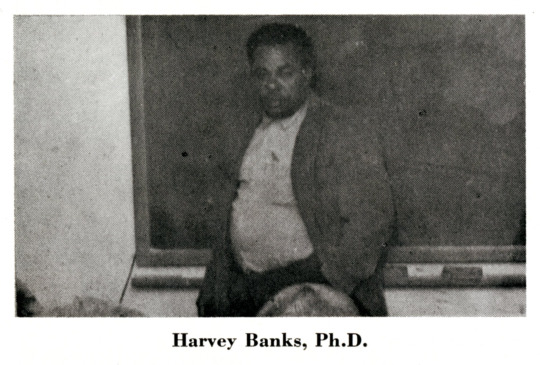
Dr. Harvey Washington Banks
In 1961, Dr. Harvey Washington Banks was the first Black American to graduate with a doctorate in astronomy. His research was on spectroscopy, the study of how light and matter interact, and his research helped advance our knowledge of the field. Roman will use spectroscopy to explore how dark energy is speeding up the universe's expansion.
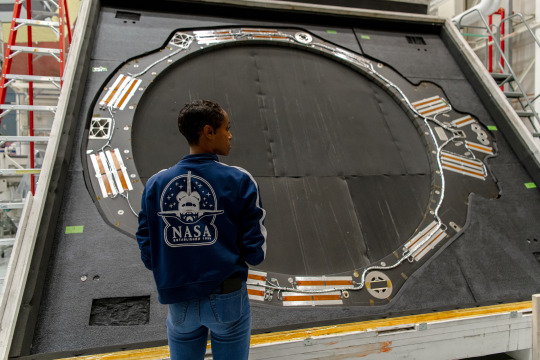
NOTE - Sensitive technical details have been digitally obscured in this photograph.
Sheri Thorn
Aerospace engineer Sheri Thorn is ensuring Roman’s primary mirror will be protected from the Sun so we can capture the best images of deep space. Thorn works on the Deployable Aperture Cover, a large, soft shade known as a space blanket. It will be mounted to the top of the telescope in the stowed position and then deployed after launch. Thorn helped in the design phase and is now working on building the flight hardware before it goes to environmental testing and is integrated to the spacecraft.
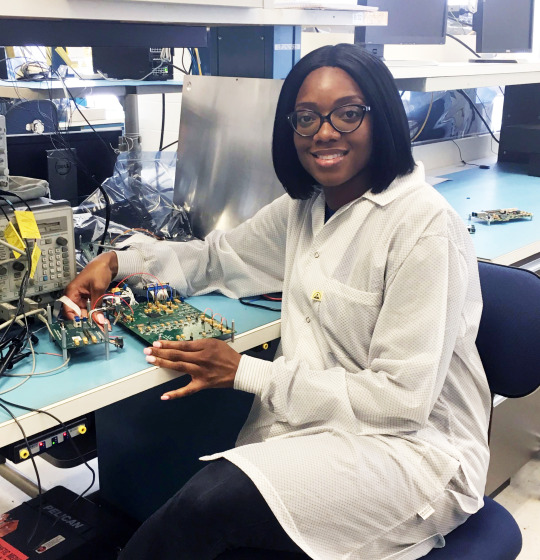
Sanetra Bailey
Roman will be orbiting a million miles away at the second Lagrange point, or L2. Staying updated on the telescope's status and health will be an integral part of keeping the mission running. Electronics engineer Sanetra Bailey is the person who is making sure that will happen. Bailey works on circuits that will act like the brains of the spacecraft, telling it how and where to move and relaying information about its status back down to Earth.
Learn more about Sanetra Bailey and her journey to NASA.
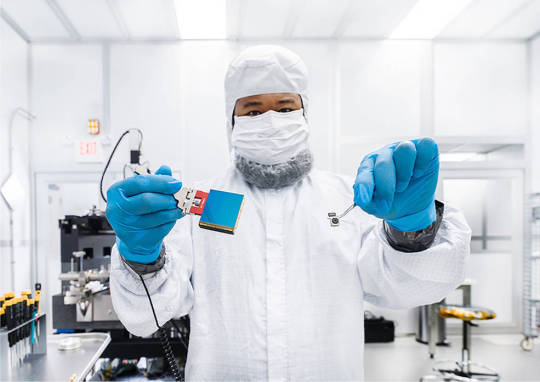
Dr. Gregory Mosby
Roman’s field of view will be at least 100 times larger than the Hubble Space Telescope's, even though the primary mirrors are the same size. What gives Roman the larger field of view are its 18 detectors. Dr. Gregory Mosby is one of the detector scientists on the Roman mission who helped select the flight detectors that will be our “eyes” to the universe.
Dr. Beth Brown, Dr. Harvey Washington Banks, Sheri Thorn, Sanetra Bailey, and Dr. Greg Mosby are just some of the many Black scientists and engineers in astrophysics who have and continue to pave the way for others in the field. The Roman Space Telescope team promises to continue to highlight those who came before us and those who are here now to truly appreciate the amazing science to come.
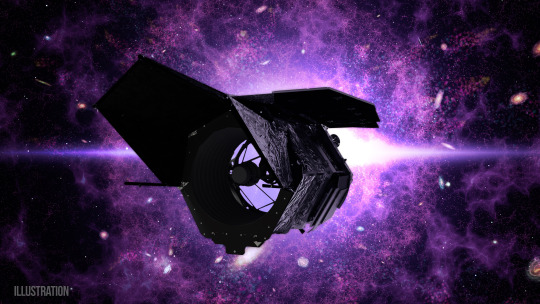
To stay up to date on the mission, check out our website and follow Roman on X and Facebook.
Make sure to follow us on Tumblr for your regular dose of space!
#NASA#astronomy#telescope#Roman Space Telescope#galaxies#black holes#space tech#astrophysics#spectroscopy#STEM#engineering#Black History Month#BlackExcellence365#science#tech#technology
2K notes
·
View notes